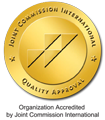A&E
Fundación Jiménez Díaz's Emergency Department (SUFJD) operates 24/7, meeting the demand for emergency care in its catchment area in the Community of Madrid, ensuring that comprehensive care is available for every patient and every case while maintaining continuity throughout the process.
The Emergency Department will prioritise the delivery of proper care in terms of time and resources, effectively responding to emergencies across various levels of medical urgency. It is part of a hospital offering a comprehensive range of complex medical services, thus ensuring that individuals can receive the same standard of care at all times. The population assigned to the FJD covers the following areas in the Community of Madrid: El Pardo, Universidad-Valdezarza, Casa de Campo, Argüelles, Aravaca, Cortes, Justicia, Palacio, Embajadores, Universidad, Imperial, Acacias, Palos de Moguer and Delicias. It includes 23 referral health centres (central area), and two speciality centres (Argüelles and Pontones).
SUFJD has a functional plan, which describes the process flows by users in each of the circuits. There are two registration circuits (over or under 18 years of age), both of them available using the self-service kiosk. Once registered, the patient passes to a waiting room. It has a priority classification system (Manchester triage) carried out by nurses, 24 hours a day. The triage process includes the reason for attending the consultation, vital signs, priority level and immediate destination for the patient. A physician and nurse are not assigned in the triage process. After triage, patients are assigned to a circuit (surgical care, polyclinics, individual rooms or priority care room) except for patients who are directly assessed by certain specialities (gynaecology, psychiatry, paediatrics and ophthalmology). After checking the patient's medical history and conducting a physical examination, the physician evaluates the patient and establishes a preliminary diagnosis, and possibly orders additional tests (e.g. analysis or imaging tests), seeks consultation from other specialists, or prescribes medication. To administer medication and/or arrange complementary tests, the patient will return to the waiting room and be attended to by the nursing staff or accompanied by the orderlies for imaging tests. Finally, based on the test results, interconsultations or the patient's progress, he or she will be assigned to one of the following: discharge, admission to hospitalisation, or stay in the observation area in the Emergency Department.
Hospital Universitario Fundación Jiménez Díaz
Avda. Reyes Católicos, 2
28040 Madrid Madrid
© 2024 Quirónsalud - All rights reserved
























